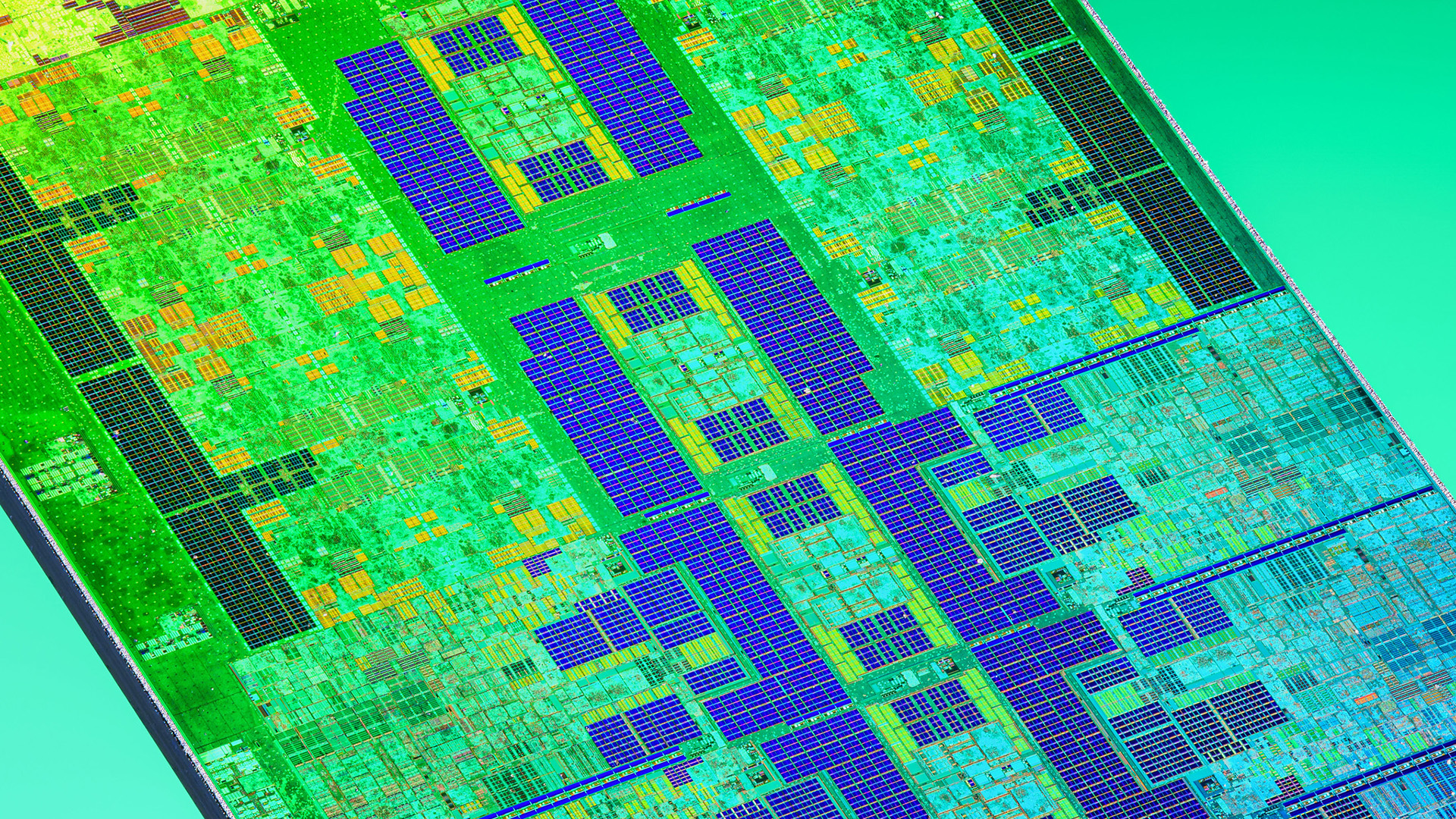No E, just the P—Intel quietly launches Raptor Lake Rekked for the embedded market
But with the Core i9's reputation looking very iffy, would anyone want to take the gamble and use it in an industrial situation?

Silicon really is a wonderful material when viewed up-close.
(Image credit: Fritzchens Fritz)Intel has been using a hybrid design for its Core processors since it launched the 12th Generation in October 2021. Since then, we've had Core i5, i7, and i9 chips with P- and E-cores, plus low-end processors with just a couple of P or E-cores. With very little fanfare, Intel has launched a range of Raptor Lake CPUs (via HardwareLuxx) for the embedded market that have no E-cores in them—they're 100% P-cores.
Topping the new line-up is the Core i9 14901KE, with eight P-cores, a maximum clock of 5.8 GHz, and a TDP of 125 W. Basically, it's a 14900K with the entire E-core block, including its L3 cache, completely disabled.
However, there are a couple of other changes under the hood. There's no Thermal Velocity Boost and the base frequency of the 14901KE is 3.8 GHz—600 MHz higher than the 14900K. Intel's database doesn't say anything about higher power limits, so it could be the case that the 14901KE is capped at 125 W in all circumstances.
These are probably dies that have a significant number of defects in the E-core clusters so they could be chips that don't run stably when fully configured. In other words, the E-cores could be fully functional but when enabled, the die just can't run at the required frequencies. So rather than send them to landfill, the Efficiency core clusters are permanently deactivated and you're left with a chip that works well enough.
Given the problems Intel has been facing concerning the stability of its Raptor Lake chips, that would be a sensible decision to make for the embedded processor market. CPUs in that sector are used in industrial applications where the chip will be active for long periods and no company will want to spend lots of money constantly monitoring and maintaining the system.
Joining the 14901KE are the Core i9 14901E and 14901TE, which are the same processor but with lower speeds and power limits (65 and 45 W, respectively). Intel is also offering two Core i7 models that also have eight cores, but have smaller L3 cache sizes (33 MB instead of 36 MB) and slightly lower clocks than the aforementioned i9 chips.
Lastly, four Core i5 variants fill out the rest of the Raptor Lake embedded range—they all have 24 MB of L3 cache, but offer a variety of different clock speed and power limit configurations. The fastest is the 14501E, with a boost clock of 5.2 GHz and a TDP of 65 W) and the slowest is the 14401TE (4.5 GHz, 45 W).
The biggest gaming news, reviews and hardware deals
Keep up to date with the most important stories and the best deals, as picked by the PC Gamer team.
Despite these being for embedded systems, you could put one into a gaming PC, as they all use the standard LGA1700 socket. Whether you'd want to is another matter, of course, but it would be interesting to see how they compared to AMD's Ryzen 7 7700X and Ryzen 5 7600X chips, as they're eight- and six-core processors, too.
At the moment, there's no word on how expensive Intel's E-less Raptor Lakes are and I've not seen any retailers offering them just yet. But if they're really cheap and you like enjoying the feeling of never knowing if your gaming PC isn't going to crash on you or not, then they could be worth a gamble.
Best CPU for gaming: Top chips from Intel and AMD.
Best gaming motherboard: The right boards.
Best graphics card: Your perfect pixel-pusher awaits.
Best SSD for gaming: Get into the game first.

Nick, gaming, and computers all first met in 1981, with the love affair starting on a Sinclair ZX81 in kit form and a book on ZX Basic. He ended up becoming a physics and IT teacher, but by the late 1990s decided it was time to cut his teeth writing for a long defunct UK tech site. He went on to do the same at Madonion, helping to write the help files for 3DMark and PCMark. After a short stint working at Beyond3D.com, Nick joined Futuremark (MadOnion rebranded) full-time, as editor-in-chief for its gaming and hardware section, YouGamers. After the site shutdown, he became an engineering and computing lecturer for many years, but missed the writing bug. Cue four years at TechSpot.com and over 100 long articles on anything and everything. He freely admits to being far too obsessed with GPUs and open world grindy RPGs, but who isn't these days?


